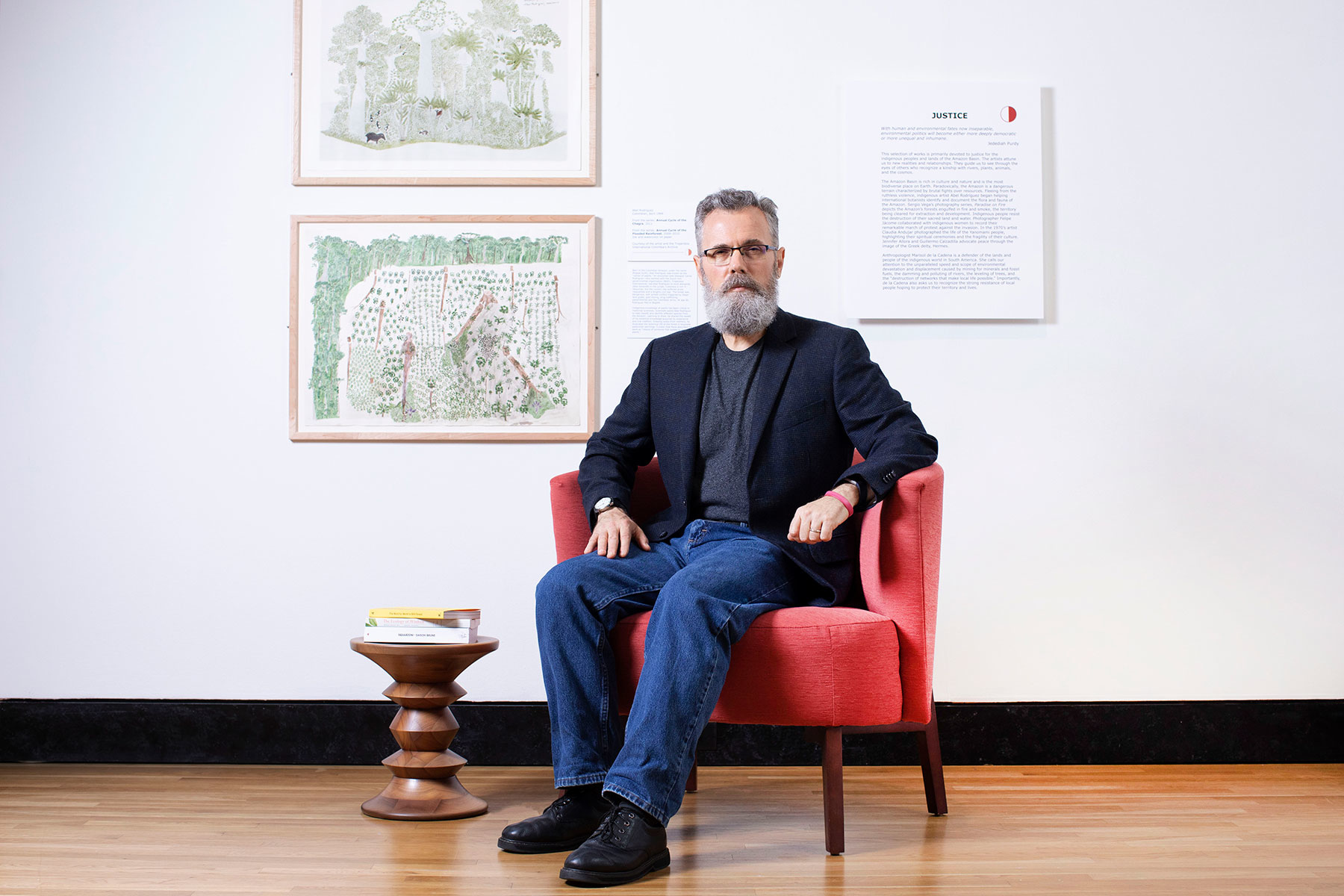“The arts are the raw material for imagining the future.”

Portrait by Brianne Lehan and Lyon Duong/UF Photography. Artwork: "From the series: Annual Cycle of the Flooded Rainforest, 2009–2010" by Abel Rodríguez, courtesy of the artist and the Tropenbos International Colombia’s Archive
Terry Harpold
Associate professor of English
The creator of UF’s Imagining Climate Change initiative breaks down barriers between science and the arts to envision what’s possible.
How can the arts help us improve the world to come?
“Literature and art are tools for thinking about alternate futures. They give you a way of thinking through scenarios and asking, ‘Do I want to live in a world like that?’ If the answer is no, the next question is, ‘What do I do to make sure we don’t get there?’”
You created two classes around “The World to Come.” How did students react to the exhibition?
“I had a number of students who felt they had been compelled to re-examine some of the priorities they had about what they were going to do, what they were going to study, what they aspired to, how they were going to measure their success in life. I don’t want to take very much credit for it, but I felt like the class gave them the opportunity to have that strong response.”
What does the Imagining Climate Change initiative do?
“What we’ve tried to do is to create a dialogue across the physical and biological sciences with the humanities and the arts. As a land-, sea- and space-grant institution, we’ve got tremendous scholars working in all these areas. We just needed to create a venue where those conversations can happen.”
What do you hope will come out of those conversations?
“We are facing what may be the greatest crisis our civilization has faced. Everyone needs to be involved and everyone needs to have a say in it. I want the geologist to talk to the religion professor. I want the musicologist to talk to the chemist. I want these kinds of almost radically impractical conversations to happen, because it’s easy to talk about what we agree on. What’s really productive is where our worlds don’t intersect.”
What do you want students to understand?
“I tell students that cynicism and despair are the refuge of cowards. I want them to be brave enough to help and to find the resolve to act. The world that they see at the end of the 21st century will be dramatically different than the world their parents or grandparents grew up in. They have to find the resources to adapt to that world and try to safeguard what they think is important. If you simply wring your hands about how messed up things are going to be, you’re ensuring they’re going to be messed up.”
Read more about Harpold’s work in these Ytori and Explore magazine stories.
This is part of a series highlighting people at the University of Florida working to protect our well-being and the health of the planet, paired with works from the Harn Museum of Art exhibition “The World to Come: Art in the Age of the Anthropocene.” See more at ufl.to/theworldtocome.